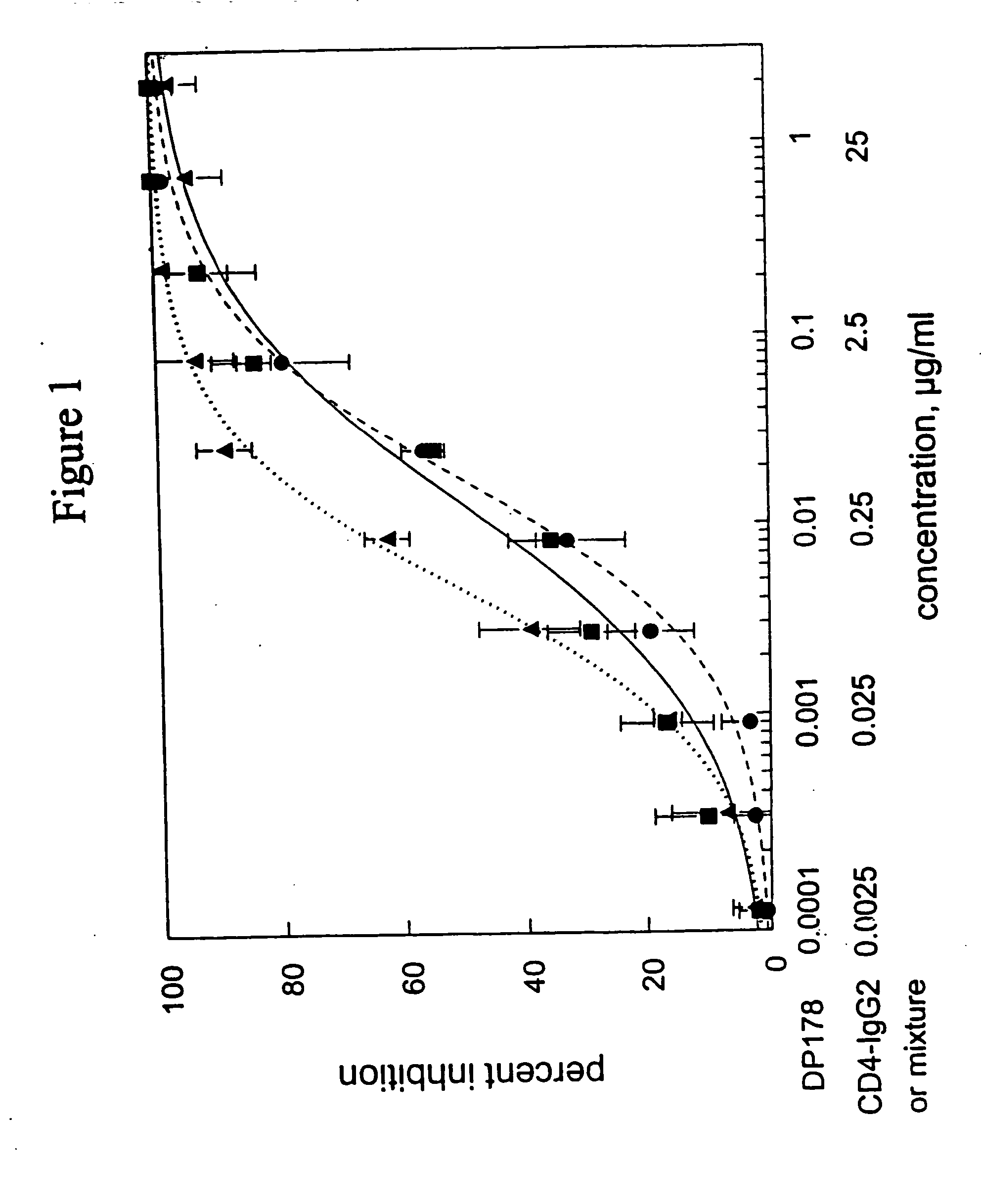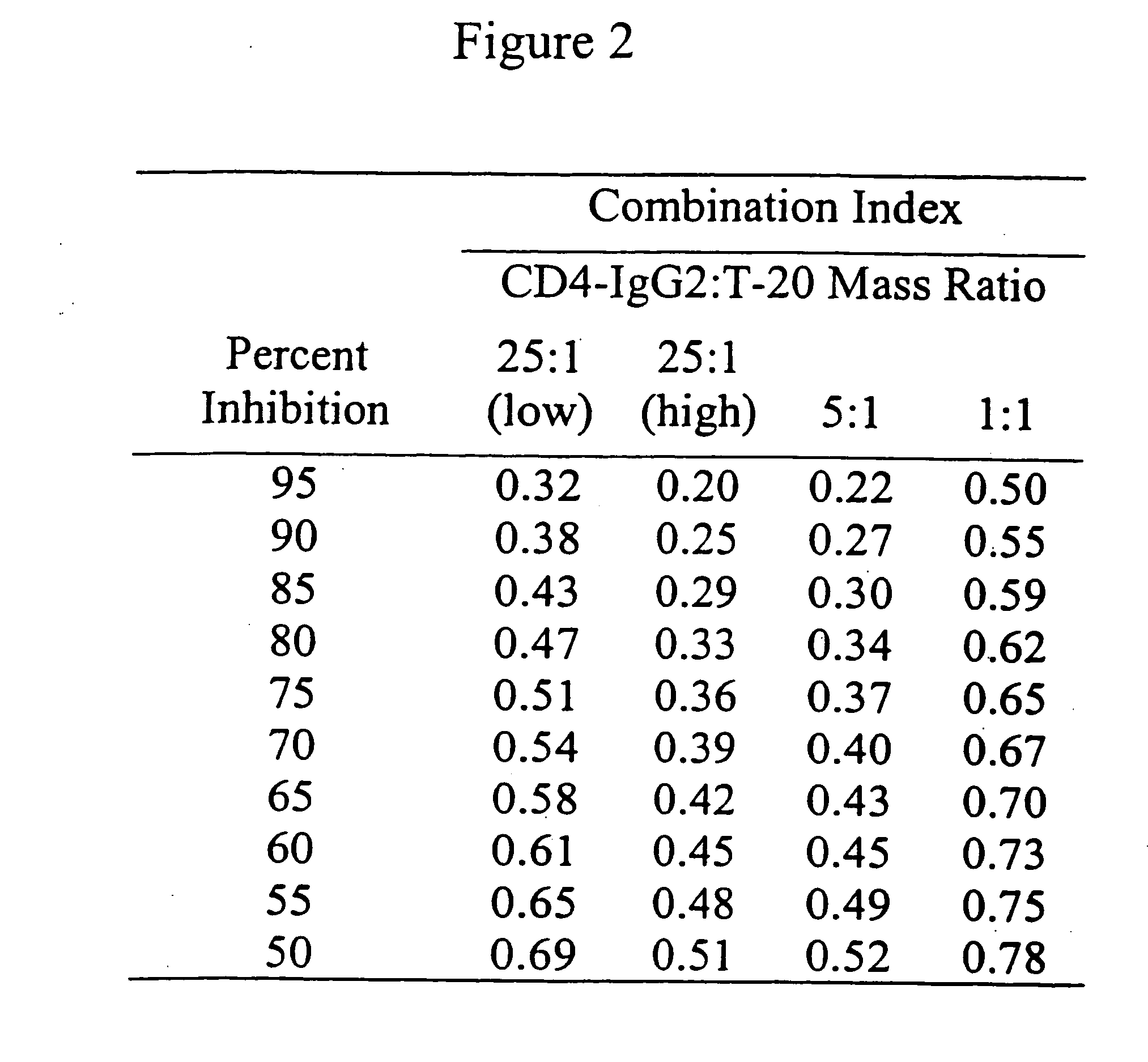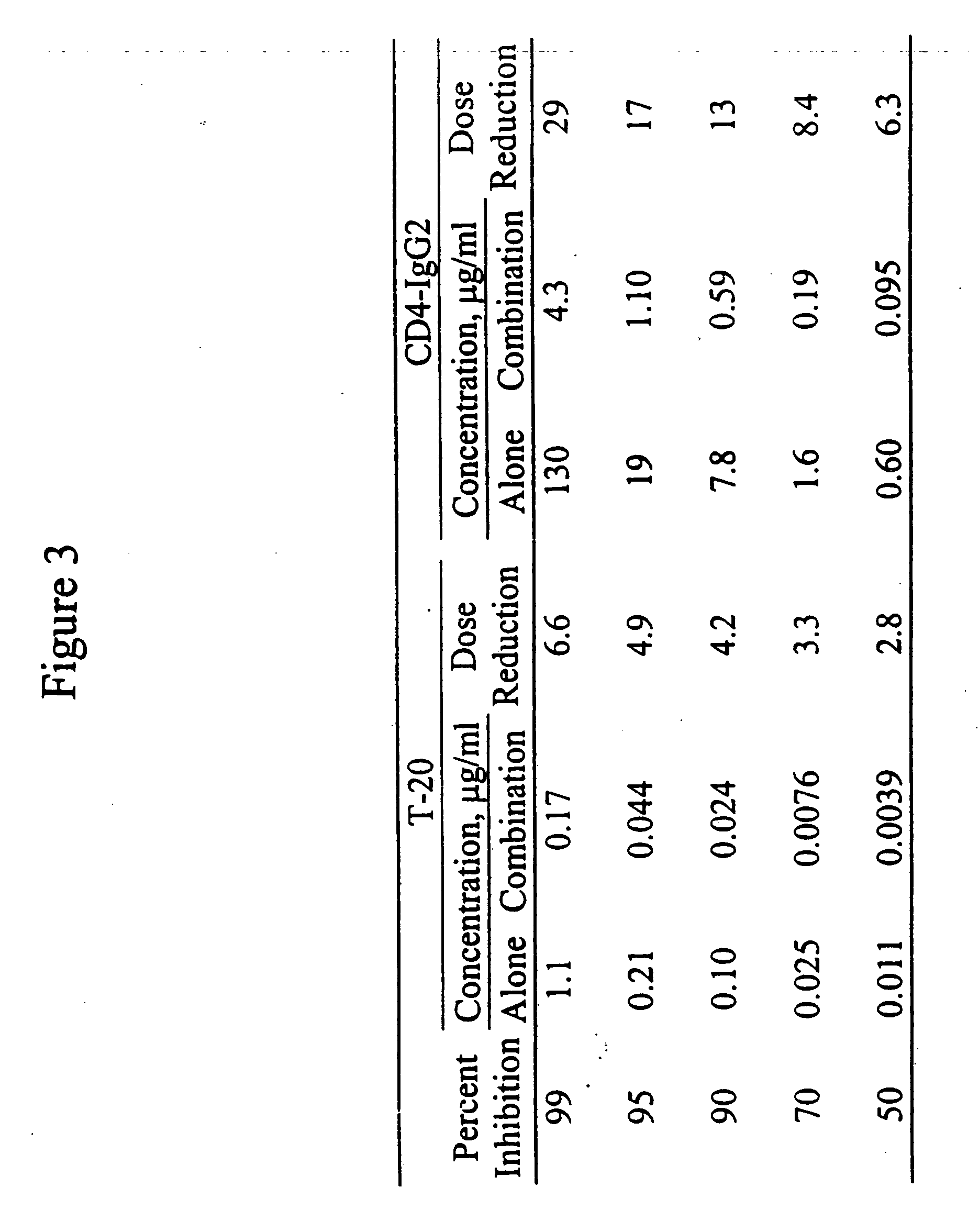Compositions and methods for inhibition of HIV-1 infection
a technology of composition and inhibition, which is applied in the field of composition and inhibition of hiv-1 infection, can solve the problems of inconclusive antiviral evaluation, virus resistance to such molecules is limited, and prior studies have not examined the combination of fusion inhibitors and ccr5 coreceptor inhibitors, ccr5 coreceptor inhibitors and hiv-1 attachment inhibitors. it can inhibit the infection of the cd4+ cell and inhibit the infection of the virus. it can
- Summary
- Abstract
- Description
- Claims
- Application Information
AI Technical Summary
Benefits of technology
Problems solved by technology
Method used
Image
Examples
Embodiment Construction
[0079] The plasmids CD4-IgG2-HC-pRcCMV and CD4-kLC-pRcCMV were deposited pursuant to, and in satisfaction of, the requirements of the Budapest Treaty on the International Recognition of the Deposit of Microorganisms (the “Budapest Treaty”) for the Purposes of Patent Procedure with the American Type Culture Collection (ATCC), 10801 University Blvd, Manassas, Va. 20110-2209 under ATCC Accession Nos. 75193 and 75194, respectively. The plasmids were deposited with ATCC on Jan. 30, 1992. The plasmid designated pMA243 was similarly deposited in accordance with the Budapest Treaty with ATCC under Accession No. 75626 on Dec. 16, 1993.
[0080] The murine hybridomas PA8, PA9, PA10, PA11, PA12 and PA14 were deposited pursuant to, and in satisfaction of, the requirements of the Budapest Treaty on the International Recognition of the Deposit of Microorganisms (the “Budapest Treaty”) for the Purposes of Patent Procedure with the American Type Culture Collection (ATCC), 10801 University Blvd, Manas...
PUM
| Property | Measurement | Unit |
|---|---|---|
| concentrations | aaaaa | aaaaa |
| molecular weight | aaaaa | aaaaa |
| concentration | aaaaa | aaaaa |
Abstract
Description
Claims
Application Information
 Login to View More
Login to View More - R&D
- Intellectual Property
- Life Sciences
- Materials
- Tech Scout
- Unparalleled Data Quality
- Higher Quality Content
- 60% Fewer Hallucinations
Browse by: Latest US Patents, China's latest patents, Technical Efficacy Thesaurus, Application Domain, Technology Topic, Popular Technical Reports.
© 2025 PatSnap. All rights reserved.Legal|Privacy policy|Modern Slavery Act Transparency Statement|Sitemap|About US| Contact US: help@patsnap.com



